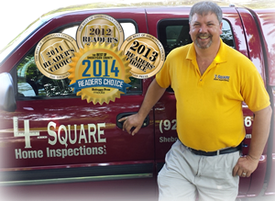If you suspect you have mold present, we offer testing services to take samples and have them tested by an accredited lab. If you choose not to have samples taken to determine the type of mold is present, then you should assume it's toxic and protect yourself accordingly. There is no way to visually identify the type of mold by just looking at it on the wall,
floor, ceiling, etc.
Personal Protective Equipment (PPE)
- Gloves - At minimum, you should be wearing gloves. This is the first line of defense for any clean-up project. Gloves that extend to the forearm are preferred. Make sure the gloves are compatible with any cleaning or disinfecting solutions you plan to use.
- Eye Protection - Safety glasses are better than nothing, but closed goggles are a better solution. These can be hot and uncomfortable, but they are the best defense against chemical burns to the eyes and will prevent tiny dust particles mold spores from getting into your eyes.
- Respirator - This is very important. Inhaling toxic mold spores can be hazardous to your health. A paper mask is not the same! The respirator should have a NIOSH rating of at least N-95. These respirators are available at most hardware or big box home improvement stores. There are 1/2 face respirators that have replaceable cartridges with many different ratings. Make sure the one you purchase is rated for mold. They come in several different sizes. Follow the directions that come with the respirator to make sure it fits properly.
- 6-mi Bags - If your cleanup is going to involve tearing out any building materials like drywall, carpet, flooring, etc., or throwing out any porous items you should have plenty of 6-mil bags on hand to put the discarded items into. You should double bag all items and dispose of them. Usually this items can be thrown away with your ordinary household garbage. YOU NEED TO BAG IT TO PREVENT SPREADING ANY MOLD SPORES THROUGHOUT YOUR HOME!
Basic Cleanup Steps
- Put on your PPE
- Fix the source of the water problem within 48 hours
- Wet-Vacuum standing water
- Throw away any porous contaminated items
- Damp wipe all non-porous surfaces with a detergent or bleach solution. DO NOT MIX BLEACH WITH any products containing AMMONIA
- Thoroughly dry the area
- If you suspect your furnace or ductwork has been contaminated, it would be
best to hire a professional to make sure the ducts are properly cleaned before
turning on the system. This could spread any mold spores throughout your
home. - Keep the humidity levels below 65%
you would like more information, please visit the Environmental Protection Agency's
website at www.epa.gov/mold


